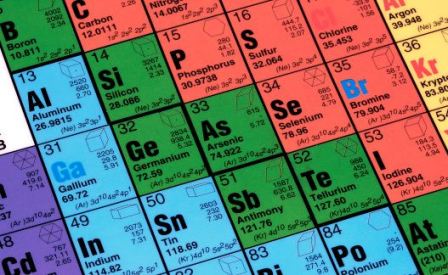A technique developed to identify a new rare element can now be used to ‘fingerprint’ and identify other rare elements in the future.
The international team of researchers, led by Sweden’s Lund University, and including nuclear physicists from the University of Liverpool, funded by the Science and Technology Facilities Council (STFC), have confirmed the existence of an extremely rare ‘superheavy’ element that was first proposed by Russian researchers in 2004, but had not been proven.
Conducting the experiment
The experiment was conducted at the GSI Helmholtz Centre for Heavy Ion Research facility in Germany, where scientists have previously discovered six other new elements.
Any element beyond atomic number 104 is known as ‘superheavy’. Superheavy elements do not normally occur naturally on earth, often existing only on the surface of exploding stars, and must therefore be produced at an accelerator laboratory. They also decay very rapidly, in fact, element 115 exists for only a fraction of a second before it decays.
During the experiment, a layer of the rare element americium was deposited on a thin foil, and bombarded with calcium ions. Using a brand new, highly specialised and unique detector system built by the Universities of Lund and Liverpool, the team of researchers were able to measure photons (light particles) in relation to the new element’s decay process.
The photon energies measured corresponded to those expected for X-rays from these products, meaning that, for the first time it is possible to reliably obtain a ‘fingerprint’ of an individual given element.
Important
Professor Rodi Herzberg, from the University’s Department of Physics, said: “This research is one of the most important experiments in the field in recent years. Nuclear physicists look to create and study the very heaviest elements predicted to exist, and now, for the first time, we can identify the fingerprints of even the heaviest of elements known to man.”
“The result gives high confidence to previous research and lays the basis for future experiments of this kind in the detection of new elements.”
Professor John Simpson, Head of STFC’s Nuclear Physics Group, said: “This research shows the importance of UK nuclear physicists playing leading roles in both the science programme and development of advanced detection systems at world leading laboratories such as GSI.
“It is really exciting to see technology developed by UK Universities, who are supported by STFC, contribute to research that could answer some of the most fundamental questions about our universe.
Energy generation
“The instruments and techniques developed through this kind of research can go on to be applied to a wide range of other areas including energy generation and the diagnosis and treatment of cancers.”
The research is published in the journal Physical Review Letters: http://prl.aps.org/toc/PRL/v111/i11.
